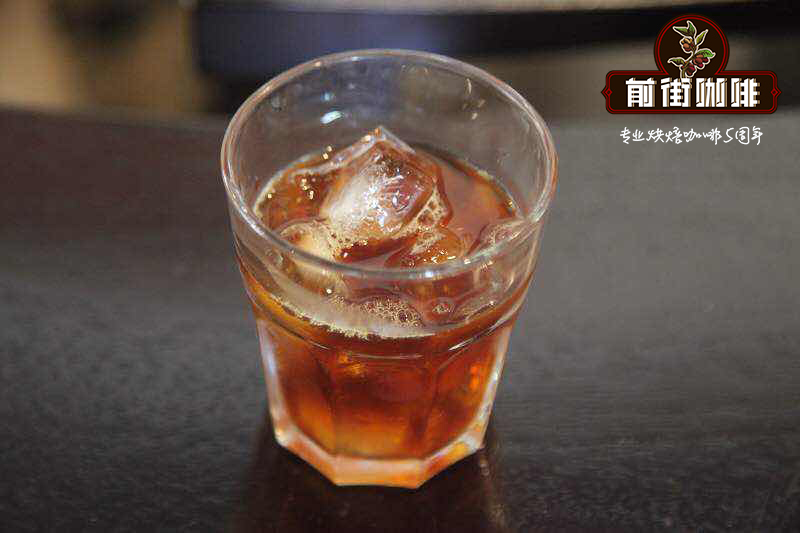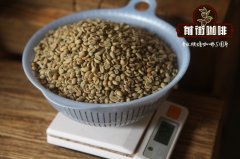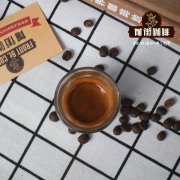Hand-brewing coffee tricks and techniques? The principle and influencing factors of hand-brewed coffee extraction? Hand-made coffee gouache

Professional coffee knowledge exchange more coffee bean information please follow the coffee workshop (Wechat official account cafe_style)
Hand-brewing coffee tricks and techniques? The principle and influencing factors of hand-brewed coffee extraction? Hand-made coffee gouache ratio?
Six factors that determine the quality of coffee
The process of extracting delicious coffee is like a never-ending long journey. Neither can we ignore any factor, nor can we give full play to the best flavor because of the special emphasis on one factor. Only through continuous preparation and efforts to strike a balance can we produce high-quality coffee.
Of course, in order to drink high-quality coffee, we need to go through the cultivation and harvest process of raw beans, select the appropriate machine with the corresponding technology to bake the process. In the end, the real key is to take into account the ground coffee and extraction concentration, and to achieve the best balance of the extraction process. Here, rather than the background knowledge of the → extraction process of raw bean → baking, I would like to focus on the water which has a great impact on the extraction process.
The coffee extract consists of 80% of the water-soluble components and other aroma components. When these ingredients are gathered together, they can improve the sensory properties of coffee, such as aroma and taste.
The aroma of coffee will not only change due to different blending and roasting conditions, but may also change if the water and proportion used are different. In other words, water can easily screen out good aroma components. Compared with the whole extract, although the content is very small and difficult to determine, the aroma components do make a great contribution to the aroma flavor (flavor). Although ingredients that are soluble in water and affect taste, and those that are insoluble in water and affect body are easy to disappear, ingredients related to aroma and taste will be extracted over time because they contain different chemical components. Generally speaking, the components with the strongest aroma are extracted at an early stage. As coffee particles come into contact with water for longer and longer, bitter substances with poor flavor will be gradually released. In other words, lengthening the extraction time will reduce the quality of coffee aroma, which is caused by water. Therefore, in order to achieve the best results, the extraction process must be controlled.
When the coffee particles are small, the water permeates and stagnates for a long time, and more ingredients related to the taste and aroma of coffee can be extracted; when the coffee particles are thicker, the water will flow directly and the stagnation time is shorter, so it is difficult to extract the relevant coffee ingredients. So in the same extraction time, the larger the particles, the more waste of coffee.
In order to extract coffee with good aroma and quality, it is necessary to master six main factors.
(1) correct ratio of water to powder
In order to extract complete coffee, the balance between strength (concentration of solute) and extraction (yield of dissolution) is important. Because once the balance is changed, it will have a significant impact on the final product. The maximum allowable concentration range is between 1.0 and 98.5 per cent of coffee powder and 99.0 per cent of water. When the concentration of coffee is less than 1%, the taste is too weak; if it is higher than 1.5%, it is too strong. In addition, the highest acceptable extraction rate is 18 Murray 22%. If it is less than 16%, it will produce the smell of peanut or grass. In contrast, if there is too much extraction, it will be more than 24% of the cases, resulting in a slight bitter or astringent taste. With reference to the brewing formula published by the American Fine Coffee Association (Specialty Coffee Association of America;SCAA), it is important to select the appropriate ratio of coffee powder to water and adjust the concentration and extraction rate.
(2) the degree of grinding in accordance with the extraction time.
After referring to the brewing formula to decide which proportion to use for extraction, the next thing to think about is to grind the coffee particles that match the extraction time. In order to avoid insufficient or excessive extraction of aroma components, it is necessary to select the appropriate grinding degree of extraction methods and tools. Generally speaking, the longer the extraction time, the more suitable for rough grinding; the shorter the time, the choice of fine grinding.
(3) correct use of extraction utensils
Contact time between ① Coffee granules and Water
Extraction can be said to be the process of extracting the water-soluble components in coffee particles when they are absorbed by water. Even if the proportion of water is changed, the chemical components will continue to be extracted from the coffee particles, and the dissolved ingredients will continue to mix and change. Therefore, controlling the extraction time can lead to the most appropriate extraction and more uniform results.
② water temperature
Cold water cannot extract coffee flavor as quickly and completely as hot water. When the water temperature is 92 ℃, the aroma components will be released more quickly and freely, so that other water-soluble components can be extracted more effectively in a reasonable time. Therefore, in the process of cyclic cooking, the temperature must remain the same.
③ agitation
When water passes through coffee particles, it produces mixing, also known as turbulence. Stirring causes coffee particles to be fully soaked at the beginning, allowing water to flow evenly through the crevices. The so-called wetting allows water to flow between the particles, and the more evenly it flows, the easier it is to separate water-soluble ingredients from the beverage. In addition, moderate stirring contributes to the immediate contact between water and coffee, that is, if the coffee powder is soaked in the first place, it can help extract more aroma components and dissolved substances.
(4) six ideal extraction methods.
Even if you choose the same kind of coffee beans, the final coffee flavor will be different due to different types of extraction utensils. The design of extraction apparatus is also made according to different basic extraction principles.
① immersion (steeping)
It refers to the method that the coffee powder is poured into the container and fully mixed with hot water, and then left for a period of time before extraction. According to the degree of grinding and water temperature, it will affect the degree of contact between the two. Different finished products will also be extracted because of the stirring of coffee powder and the speed of coffee powder separation.
② decoction (decoction)
It refers to the method of boiling the coffee powder and water in the container after mixing. After the temperature rises to about 100 ℃, it will be difficult to continue extraction because of the high temperature, and the water begins to boil, which may cause serious turbulence.
③ percolation (percolation)
The container containing ground coffee powder (brewing chamber) is heated directly and the hot water is recycled by steam pressure to extract the coffee. When heated, the water boils up, passes through the powder trough filled with coffee powder, and then flows out through the pipe, and the cycle is repeated. At this time, the degree of grinding, water temperature and circulation speed will be different due to different contact time.
④ trickle filtration (drip filtration)
Trickle filtration (drip filtration)
It refers to a simple way to pour coffee powder into a filter and fill it with hot water, and then use a glass pot or coffee thermos to filter out the extract. It is one of the more common methods that have been improved recently, including hand drip (or pour over) and so on. The concept of dripping is extremely complex, and there are many different dripping methods, and there are many related books, so I hope you can choose the appropriate tools according to the flavor of coffee you want.
Hand flushing also has a variety of extraction instruments, so it will be extracted in different ways. The extraction principle is carried out by drip filtration, so the contact time caused by different flow rates is a very important factor. at the same time, like other extraction utensils, coffee flavor will be changed due to different water temperature, filter cup and filter paper.
⑤ vacuum Filtration (Vacuum filtration)
The most representative is the siphon pot. Is the use of upper and lower two glass pots and fusion immersion (Steeping) extraction. Affected by the vapor pressure, the hot water passes through the coffee powder from the bottom of the glass, then filters it using the pressure difference between the upper and lower pots, and then extracts the coffee. The water in the lower pot is heated and converted into steam form, which will affect the number of times of coffee and water soaking due to the different degree of steam release, bringing more variables. Different vacuum methods will affect the contact speed, and different filters and grinding degrees will also change the flavor of coffee.
Vacuum filtration (Vacuum filtration)
⑥ pressurized infiltration (Pressurized infusion)
The representative drink that promotes the popularization of coffee is espresso, which is widely loved by many people because it allows us to drink extracted coffee more quickly, and on this basis, the coffee culture we know well extends to daily life, and has created countless coffee industry creators. Espresso is a method of pressure extraction of ground coffee powder with high temperature and high pressure water. The concentration will be higher than that of dripping coffee, and there are more aroma components, emulsified oils and dissolved solids. In order to fully reproduce the flavor of coffee, fast and stable extraction time and fine grinding particles are necessary, and the extraction temperature and the amount of ground coffee powder are also one of the factors.
These are the extraction methods of coffee, in which boiling and percolation may lead to excessive extraction, resulting in a bad taste, so it is rarely used.
Pressurized infiltration (Pressurized infusion)
(5) good water quality
That's why I wrote this book. I want to write about the effect of water quality on the flavor of coffee. When preparing coffee, water is as important as coffee. In fact, the proportion of water in the coffee extract is 98%. Water with a small amount of minerals helps to produce the best flavor of the drink. Generally speaking, water containing 50--100ppm minerals can make the beverage with the best taste. This kind of water tastes fresh, has no peculiar smell, will not have sundries visible to the naked eye, and is very suitable for drinking water.
It is not said that a good coffee can be made by using a certain proportion of soft or hard water, but it is worth referring to that water is a factor that must be managed before coffee is extracted. The method of filtering water will be explained in more detail later, and what we need to know now is:
In the process of using sodium ions to study water, it was found that water containing a large amount of bicarbonate (bicarbonate, chemical formula HCO3--) was not suitable for coffee extraction. The above methods will increase the alkalinity and have an effect on the flavor of coffee. It will also increase the possibility of over-extraction due to different treatment methods and longer contact time between coffee and water, resulting in a bad taste.
At PART2, we will explain the importance of water one by one, so that you can take a closer look at the world of coffee flavor and water.
(6) appropriate filter material
Filters span various fields, and many kinds can be found on the market. Choose different filters according to the function of the machine, the positioning of the coffee shop and the taste you pursue. Like a popular filter, it is only popular for a while; there are also filters with professional functions that can be used for a long time and even represent the image of a coffee shop. As the filtering method will directly and indirectly affect the mellow feeling and flavor of coffee, the role of coffee will be different according to the filter used, so it is regarded as an important factor. Although there are many kinds of filter materials on the market, they can be roughly divided into three categories. Other relevant variables in the extraction and the advantages and disadvantages of each filter and other details are skipped here, mainly with the general content.
① metal filter, filter cup (perforated metal plate)
There are various specifications for the size and number of holes in the metal plate, so the degree of grinding must be considered before use. This tool basically has nothing to do with filtering drinks, only very fine particles can pass through.
② filter cloth (cloth)
It is a filter that helps to extract excellent flavor, taking flannel and velvet as an example. Before using the filter cloth, it must be boiled in hot water and well managed before it can be used for a long time. Oil infiltration into the filter cloth is easy to produce spoiled flavor, and the flavor of the beverage will be changed when it is cooked. Therefore, we should pay attention to the storage temperature (after use, put it in a container filled with cold water or put it in the freezer), and choose the container carefully.
③ filter Paper (paper)
Although it is considered to be the best filter to extract the refreshing taste, it is somewhat difficult to establish an ideal coffee extraction environment with filter paper. in addition, if the filter paper is blocked, it is likely to change the flow of water and lead to over-extraction. However, in addition to extracting the refreshing taste, it is still loved by many coffee shops because of its convenient use and convenient preservation and management.
Basically, the quality of coffee depends on the ability of the brewer. Although "people" is the biggest variable. " This sentence seems to be true, but it is the most important process to choose what kind of coffee beans and appropriate utensils to mix out the flavor you are looking for. Of course, instead of choosing the world-class coffee beans to brew, it is better to first imagine the process from coffee beans to brewing into a cup of coffee, recall all the processes and six major factors of the extraction process, and then adjust to brew the coffee, this way is closer to getting the ideal coffee.
Important Notice :
前街咖啡 FrontStreet Coffee has moved to new addredd:
FrontStreet Coffee Address: 315,Donghua East Road,GuangZhou
Tel:020 38364473
- Prev

The way of making coffee in Japanese style? Japanese hand coffee making skills? Filling time of Japanese hand-brewed coffee
Professional coffee knowledge exchange more coffee bean information please follow the coffee workshop (Wechat official account cafe_style) Japanese hand coffee? Japanese hand coffee making skills? What is the filling time of Japanese hand coffee? With regard to hand brewing, Europe and the United States are relatively bold and unrestrained, and Japanese brewing is more popular in China at present. The general method is to pay attention to the big arm driving the forearm and turning slowly.
- Next

The reason why Hawaiian Kona coffee is expensive is Hawaiian Kona coffee really good?
Professional coffee knowledge exchange more coffee bean information please follow the coffee workshop (Wechat official account cafe_style) Hawaii kona Coffee: there is a saying that Blue Mountain is the king of coffee, KONA is after coffee. But compared with the Blue Mountains, due to the island topography and volcanic soil, Hawaiian coffee has a very special taste, not too strong, not too sour and mellow.
Related
- Detailed explanation of Jadeite planting Land in Panamanian Jadeite Manor introduction to the grading system of Jadeite competitive bidding, Red bid, Green bid and Rose Summer
- Story of Coffee planting in Brenka region of Costa Rica Stonehenge Manor anaerobic heavy honey treatment of flavor mouth
- What's on the barrel of Blue Mountain Coffee beans?
- Can American coffee also pull flowers? How to use hot American style to pull out a good-looking pattern?
- Can you make a cold extract with coffee beans? What is the right proportion for cold-extracted coffee formula?
- Indonesian PWN Gold Mandrine Coffee Origin Features Flavor How to Chong? Mandolin coffee is American.
- A brief introduction to the flavor characteristics of Brazilian yellow bourbon coffee beans
- What is the effect of different water quality on the flavor of cold-extracted coffee? What kind of water is best for brewing coffee?
- Why do you think of Rose Summer whenever you mention Panamanian coffee?
- Introduction to the characteristics of authentic blue mountain coffee bean producing areas? What is the CIB Coffee Authority in Jamaica?

